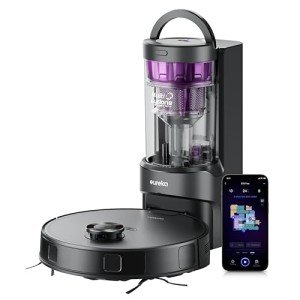14 Smart Ways To Spend Your On Leftover Robot Vacuum Sale Budget
The Rise of Robot Vacuum Sales: A Comprehensive Overview
In the age of automation, household chores have undergone a considerable transformation. Amongst the most noteworthy developments in this domain are robot vacuums, which are transforming the way we keep tidiness in our homes. As technology advances and customer preferences shift, the marketplace for robot vacuums has seen unmatched growth. This post explores the aspects driving the robot vacuum sales boom, examines customer preferences, and examines the future landscape of this growing market.
Aspects Driving Robot Vacuum Sales
1. Technological Advancements
The continuous evolution of technology has played a critical role in boosting the effectiveness and performance of robot vacuums. Here are some crucial advancements that have added to increased sales:
- Improved Navigation Systems: Modern robot vacuums utilize sophisticated mapping and navigation technologies, such as LiDAR and visual navigation, enabling them to clean more effectively and prevent challenges.
- Smart Connectivity: Integration with smart home systems and smartphone applications enables users to manage and set up cleansings remotely.
- Enhanced Suction Power: Advances in motor technology have actually resulted in stronger suction capabilities, enabling robot vacuums to carry out well on different floor types, consisting of carpets and wood.
2. Increased Consumer Demand
Customer demand for convenience and time-saving services has skyrocketed. The desire for smarter homes reflects a way of life shift, where individuals focus on ease and effectiveness. Robot vacuums fit effortlessly into this pattern by offering:
- Hands-Free Operation: Users can automate their cleaning routines, reducing the time and effort needed for manual vacuuming.
- Scheduled Cleaning: Many designs allow users to set cleaning schedules, ensuring consistent maintenance without the requirement for active participation.
3. Expanding Market Options
As the robot vacuum market matures, a variety of brand names and designs have gotten in the fray, accommodating different consumer needs and budget plans. This expansion has caused:
- Diverse Price Ranges: Consumers can discover robot vacuums that fit their budgets, from entry-level alternatives to high-end designs with sophisticated functions.
- Range of Features: Different designs use a range of features, consisting of mopping capabilities, HEPA filters, and self-emptying dustbins, allowing consumers to pick a vacuum tailored to their specific requirements.
Popular Brands and Models
With numerous brand names completing in the robot vacuum arena, it's essential to explore a few of the most popular names and their standout models. The following table summarizes significant brand names and their offerings:
Brand
Notable Model
Key Features
Price Range
iRobot
Roomba i7+
Smart mapping, self-emptying, voice control
₤ 800 – ₤ 1,200
Roborock
Roborock S7
Mopping, powerful suction, obstacle avoidance
₤ 600 – ₤ 900
Ecovacs
Deebot T8 AIVI
Smart home integration, mopping, multi-floor mapping
₤ 500 – ₤ 800
Neato
Neato D8
D-shape design for corners, HEPA filter
₤ 400 – ₤ 600
Shark
Shark IQ Robot
Self-emptying base, smart mapping, voice control
₤ 400 – ₤ 700
How to Choose the Right Robot Vacuum
Picking the ideal robot vacuum can be overwhelming given the range of options available. Here are some important considerations to help customers make a notified decision:
1. Floor Type
- Carpets: Look for models with strong suction and brush rolls designed for carpet height.
- Hardwood: Choose vacuums that feature soft brushes or rubberized rollers to avoid scratching.
2. Preferred Features
- Self-emptying: For users who prefer very little interaction.
- Mopping performance: Ideal for homes with difficult floors requiring mopping.
- Smart home compatibility: Consider models that can be incorporated with tech communities like Alexa or Google Home.
3. Budget
- Entry-Level Models: Generally variety from ₤ 200 to ₤ 400, supplying standard cleaning abilities.
- Mid-Range Models: Priced between ₤ 400 and ₤ 800, these often consist of more features and better navigation systems.
- High-End Models: Often priced over ₤ 800, offering sophisticated innovation, powerful suction, and multi-surface cleaning capabilities.
The Future of Robot Vacuum Sales
As the pattern of home automation grows, the robot vacuum market is poised for continued growth. Here are some expected patterns forming the future:
1. Enhanced Artificial Intelligence
The integration of AI in robot vacuums will lead to more instinctive cleaning patterns, enhancing their ability to discover user choices and home layouts with time.
2. Increased Sustainability
Consumers are ending up being more environmentally conscious, triggering makers to explore sustainable materials and energy-efficient innovations in their items.
3. Continued Market Expansion
With advancements in technology and a rise in the middle-class population internationally, it is likely that more households will adopt robot vacuums, further sustaining sales growth.
FAQs
1. Are robot more info on carpet?Yes, many modern-day robot
vacuums are developed to effectively tidy carpets. Designs with strong suction and specialized brushes do especially well. 2. How frequently should I run my robot vacuum?It depends upon your home. For homes with pets or high traffic, running
the robot vacuum daily might be ideal. Others might only need to clean a couple of times a week. 3. Do robot vacuums work on all floor types?Most robot vacuums can shift in between various floor types, consisting ofhardwood, tile, and carpet. However, inspecting the**
requirements for each design is advisable. 4. Can robot vacuums tidy under furniture?Yes, lots of robot vacuums are created to clean up under low furniture due to their compact size and design. 5.**
How long do robot vacuums last?With proper maintenance, a quality robot
vacuum can last anywhere from 3 to 7 years, depending upon the brand and design.
Robot vacuums have improved the cleaning landscape, appealing to individuals seeking convenience without jeopardizing cleanliness. As technology progresses and consumer choices evolve, the marketplace for robot vacuums will likely continue to expand, using increasingly sophisticated functions that deal with the requirements of a diverse consumer base. Understanding the aspects driving sales and the requirements for choosing the right vacuum will empower customers to make educated choices, contributing to an automated future where home tasks end up being less of a concern. 